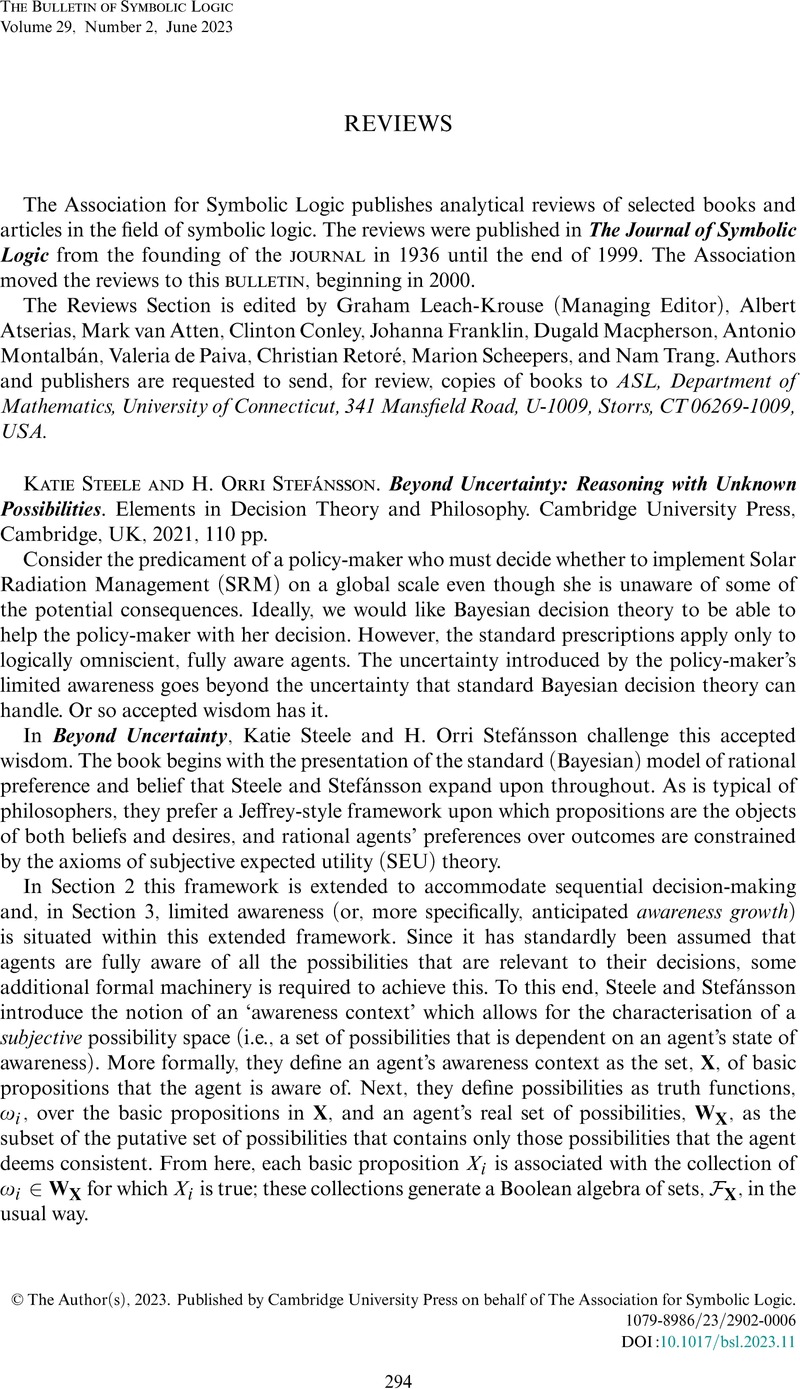No CrossRef data available.
Article contents
Katie Steele and H. Orri Stefánsson. Beyond Uncertainty: Reasoning with Unknown Possibilities. Elements in Decision Theory and Philosophy. Cambridge University Press, Cambridge, UK, 2021, 110 pp.
Review products
Katie Steele and H. Orri Stefánsson. Beyond Uncertainty: Reasoning with Unknown Possibilities. Elements in Decision Theory and Philosophy. Cambridge University Press, Cambridge, UK, 2021, 110 pp.
Published online by Cambridge University Press: 18 July 2023
Abstract
An abstract is not available for this content so a preview has been provided. Please use the Get access link above for information on how to access this content.

- Type
- Reviews
- Information
- Copyright
- © The Author(s), 2023. Published by Cambridge University Press on behalf of The Association for Symbolic Logic



